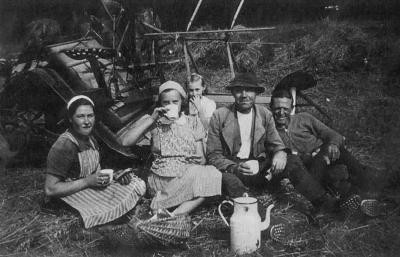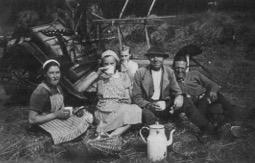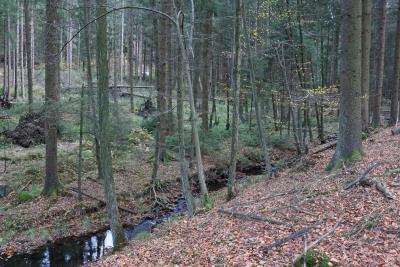On the search for clues - NS crimes against forced labourers and prisoners of war in a village in Sauerland

Garbeck under the swastika
Until the territorial reform of 1975, the district of Garbeck belonged to the department of Balve; today it belongs to the town of Balve. In 1939, the village, with its districts of Levringhausen, Hövringhausen and Frühlinghausen, had 1,419 inhabitants. In his book about the region’s history[1], Josef Pütter, a local historian and honorary citizen of Balve, devoted just three lines to the National Socialist regime. On this subject, the home page of the town of Balve states somewhat self-critically: “A need for reverence has meant that a profound account of the outcomes and impacts of the NS period has not yet been written. Former Nazis, and especially their families, should be spared”. And: “Only after they had seized power, were the NSDAP and their subdivisions able to gain a firmer foothold in Balve, as the election results before and after 1933 show. The Reichstag election on 31 November 1932 gave the NSDAP only 15.6 percent of the votes, with the Centre gaining 68.2 percent of the votes. Between the Reichstag election and the referendum in 1933, the mood had changed.”[2] In the election on 5 March 1933, the NSDAP had already gained 31.3 percent of the votes in neighbouring Garbeck, with the Centre still managing 62.8 percent and the SPD 3.4 percent. The Communists only got eight votes.
The Nazis now had a tight hold on the Catholic Sauerland as well. From the police files, I discovered that during the Pogrom night in November 1938 the Nazis had abused the last remaining Jew in Balve and demolished his apartment.[3] In 1922, David Bondy had been appointed the first honorary citizen of Balve. He had set up a foundation for the poor and donated a church clock to the church community. Pütter claims that no harm was inflicted on the Jewish merchant by the people of Balve. “Unfortunately, the people had to sadly and powerlessly stand by as foreign SA people attacked the old man.”[4] Bondy wrote a final card from Theresienstadt to a musician friend. Pütter does not tell us anything more about the fate of the Jew who was “held in such high esteem” by the people in Balve.
In Garbeck too, many people were excited about “Führer, folk and Fatherland”. From the NSDAP membership register I can see that a quarter of all adults in the village belonged to a party grouping. The NSDAP local chapter had almost eighty members, not just a handful, as is still repeatedly claimed today. Twenty-five men wore the uniform of the SA, some of them had been wearing it since the middle of the 1930s. The teachers at Garbeck primary school were members of the NS Teacher’s Federation, even the National Socialist Flying Corps and the German Aviation Sports Association had a few members from the village. Most of the children and the young people were enrolled in the Hitler Youth or in the League of German Girls. Even Garbeck kindergarten posed for a souvenir photo with the swastika flag.[5]



